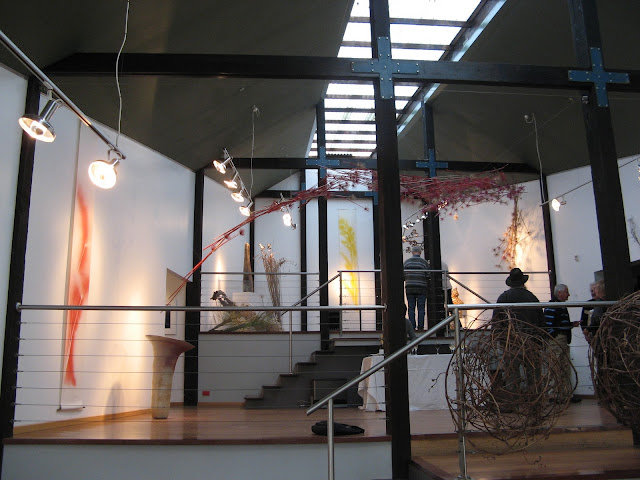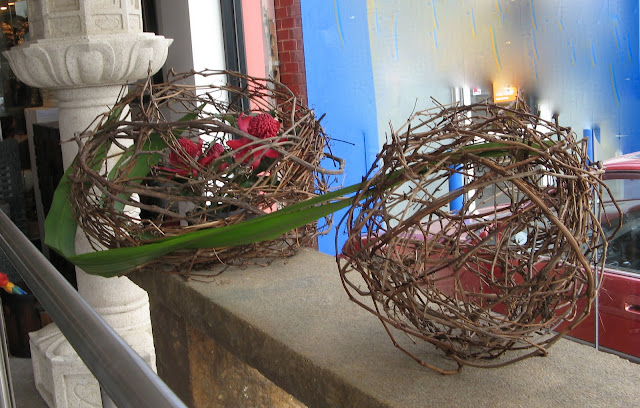In the last week we have spent three days at the gallery setting up our work. This year has seen a marked departure from previous exhibitions. We have not used any fresh material at all and the theme has been the creation of installations that relate directly to the aspects of the gallery building or Graeme Wilkie's ceramics. We began by collecting materials over the last several weeks and preparing some of them in advance of taking them to the gallery. Because of the scale all of the works were done collaboratively with one principal designer. The gallery is located on a steep hillside and has three levels under a sweeping continuous roof.
This work below is in the entrance foyer of the gallery. The two large ceramic pieces are about 1.4 Metres long. A rectangular box shape has been covered with magnolia leaves, showing their backs (except one), and caught in a frame-work of black bamboo. I designed the work and was assisted by Christine Denmead.
This is a large floating installation of dried agapanthus flower stems some of which have been painted red. A stencil image of agapanthus hangs behind the work. The work floats over the middle level of the gallery and extends to the upper level. Designed by me assisted by Ellie Welkamp.
This work, designed by Helen Quarrell, is made of bamboo frames with paper triangles. It related to the view of trees outside the large windows to the right of the picture frame. The blue stencil on the left is of bamboo.
This work is of blue PVC pipes and has triangular paper stencil inserts. One part of the design hangs outside the window. It was designed by Maureen Duffy.
These large spheres were made of grape vine. The design is by Nola Bird.
This work is made with dried fennel stems some of which are painted red. The design is by Christine Denmead.
This hanging work is made from dried New Zealand Flax flowers one of which was painted yellow. It was created by me and Ellie Welkamp.
Here Ellie Welkamp has created an assembled work of a variety of dried materials set in a sculpture made of square mesh wire. The large cone of tall grasses on the right is an inversion of the ceramic 'oblisk' shape.
I hope you enjoy these images. As always they do not fully convey the three dimensionality of the work and the space of the gallery in which they are set.
Greetings from Christopher
25th September 2011




































